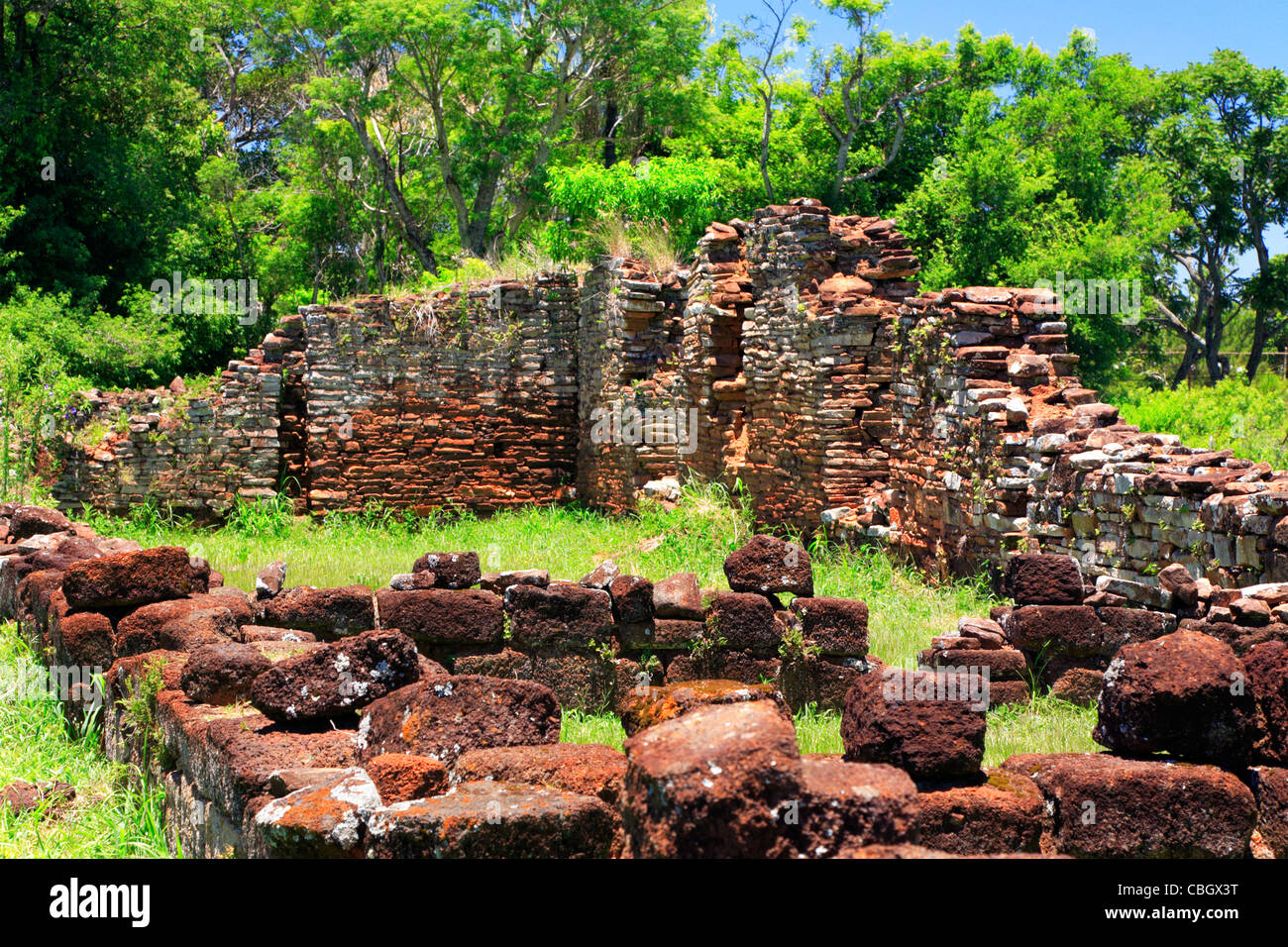San Ignacio Miní ruins.The main square was surrounded by the church, a cabildo, a cemetery, a monastery and some houses.

Image details
Contributor:
Bernardo Galmarini / Alamy Stock PhotoImage ID:
CBGX3TFile size:
53.9 MB (4.6 MB Compressed download)Releases:
Model - no | Property - noDo I need a release?Dimensions:
5315 x 3543 px | 45 x 30 cm | 17.7 x 11.8 inches | 300dpiDate taken:
December 2011Location:
San Ignacio Miní ruins. Misiones, Argentina, south America.More information:
San Ignacio Miní was one of the many missions founded in 1632 by the Jesuits in the Americas during theSpanish colonial period near present-day San Ignacio valley, some 60km north of Posadas, Misiones Province, Argentina.The original mission was erected near the year 1610 by priests José Cataldino and Simón Maceta in the region called Guayrá by the natives and La Pinería by the Spanish conquistadores in present Paraná State, Brazil. Because of the constant attacks of the Portuguese Bandeirantes, the mission first moved in 1632, and didn't settle in its current location until 1696, and was called San Ignacio Miní (minor in Guaraní) to distinguish it from its bigger homonym San Ignacio Guazú (great). In the 18th century the mission had a population of around 3000 people, and a rich cultural and handicraft activity, which was commercialized through the nearby Paraná River. Nevertheless, after the Suppression of the Society of Jesus of 1767, the Jesuits left the mission a year later, and the mission finally destroyed in 1817, as well as other missions in the area. The ruins are one of the best preserved among the several build in a territory today belonging to Argentina, Brazil and Paraguay, and one of the most visited due to its accessibility. The main square was surrounded by the church, a cabildo, a cemetery, a monastery and some houses. The magnificent church with 74 metres length and 24 metres width was designed by Italian priest Juan Brasanelli, and build using the local red sandstone. The width of the walls are around 2 metres, what in spite of the fragile material let the constructions remain standing after over two centuries. In 1984 the ruins were declared as World Heritage Site by UNESCO, and currently hold the Museo Jesuítico de San Ignacio Miní museum.